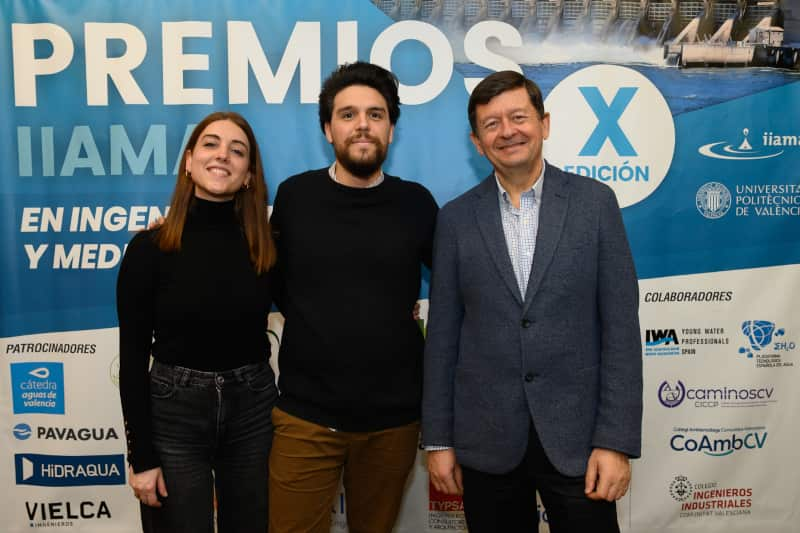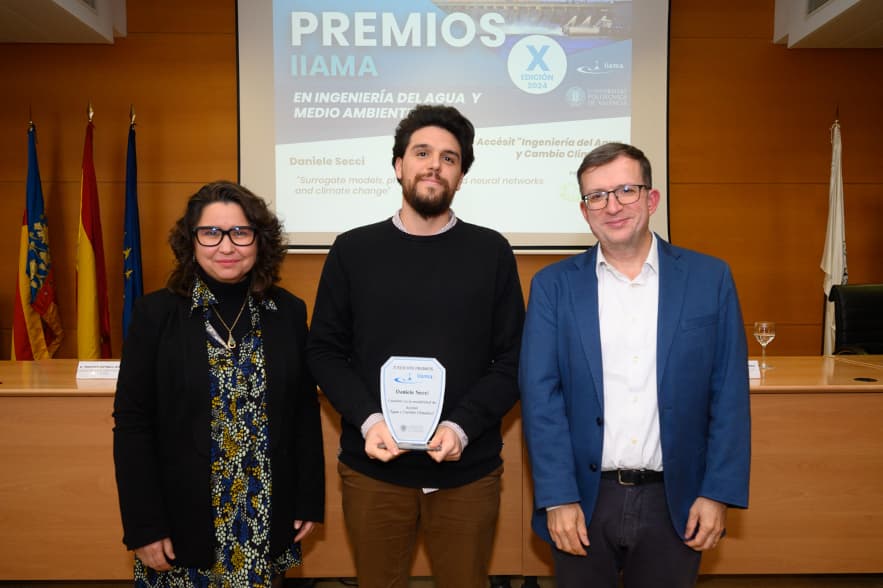Daniele Secci has won the Accésit in the category “Agua y Cambio Climático” which is funded by the Cátedra de Cambio Climático, at the 10th Edition of the IIAMA Awards for his doctoral thesis titled “Surrogate Models, Physics-Informed Neural Networks and Climate Change”. The research was led by Jaime Gómez-Hernández (IIAMA), together with Maria Giovanna Tanda and Valeria Todaro (Università di Parma).
Secci holds a degree in Civil Engineering and a master’s degree in Environmental Engineering. He has recently completed his PhD. From a very young age he has had a deep fascination for water resources, in particular groundwater, an undervalued resource of our ecosystems.
“The urgency of addressing water-related challenges worldwide motivated me to specialize in this field”, Secci said.
Daniele Secci is currently a postdoctoral researcher continuing his work on groundwater modeling.
– What does your award-winning research focus on in general terms?
The core of my PhD thesis focuses on the application of surrogate modeling techniques to groundwater systems. Surrogate modeling creates simplified yet accurate representations of complex systems, enabling faster simulations. This approach is particularly valuable for studying groundwater flow and contaminant transport, which are often computationally expensive to simulate using traditional methods.
“The goal is to develop innovative tools to assess the impact of climate change on groundwater”
– What are the main research areas explored in your work?
My research incorporates statistical methods, conventional neural networks, deep learning techniques and physics-informed neural networks. The goal is to develop innovative tools to assess the impact of climate change on groundwater, improve pollution mitigation strategies and support decision-making for water resource management.
“The European project InTheMED provided the perfect framework to explore the integration of advanced modeling techniques in groundwater management”
– How did the idea for this research project originate?
The idea was born out of the challenges faced by researchers in simulating groundwater systems under the dual pressures of climate change and overexploitation.
The European project InTheMED provided the perfect framework to explore the integration of advanced modeling techniques in groundwater management.
“My study demonstrated that surrogate models, particularly physics-informed neural networks, can significantly reduce computational costs while maintaining accuracy”
– What conclusions did you draw?
My study demonstrated that surrogate models, particularly physics-informed neural networks, can significantly reduce computational costs while maintaining accuracy. They also provide better interpretability by embedding physical laws into the modeling process.

– What is the potential social impact of the project?
Groundwater serves as a critical resource for billions of people. By enhancing our ability to predict groundwater behavior under various scenarios, my work contributes to sustainable water management and helps mitigate the effects of climate change, especially in water-scarce regions.
– How did you react when you found out that you had obtained one of the IIAMA awards in its 10th edition?
I was deeply honored and thrilled when I learned I had received the award. It’s an incredible recognition of the hard work and dedication I’ve put into this research.
– What do you think about the future of R&D&I in Spain?
Regarding the future of R&D in Spain, I believe there’s great potential, but it requires sustained investment and collaboration across academia, industry, and policymakers to address global challenges effectively.


